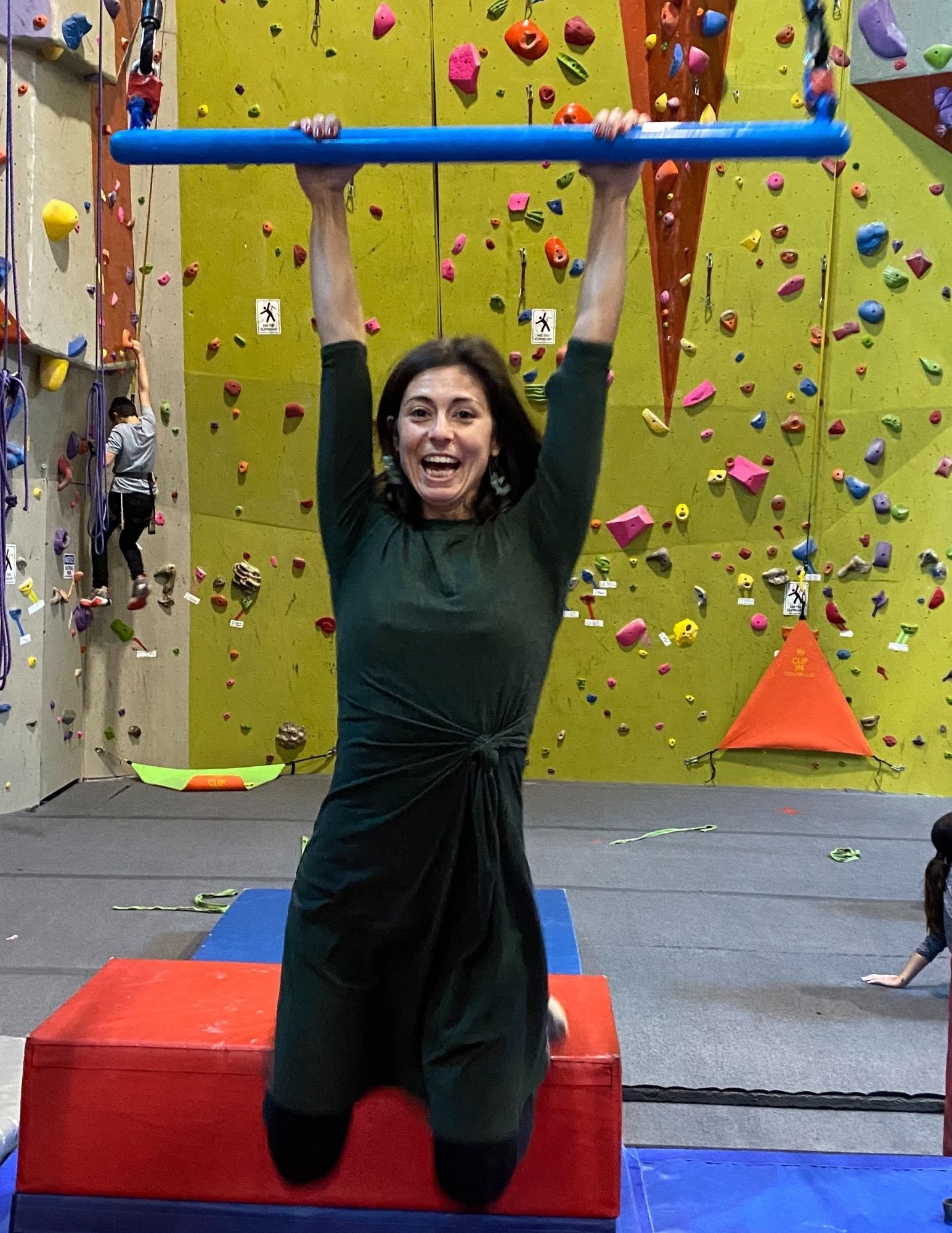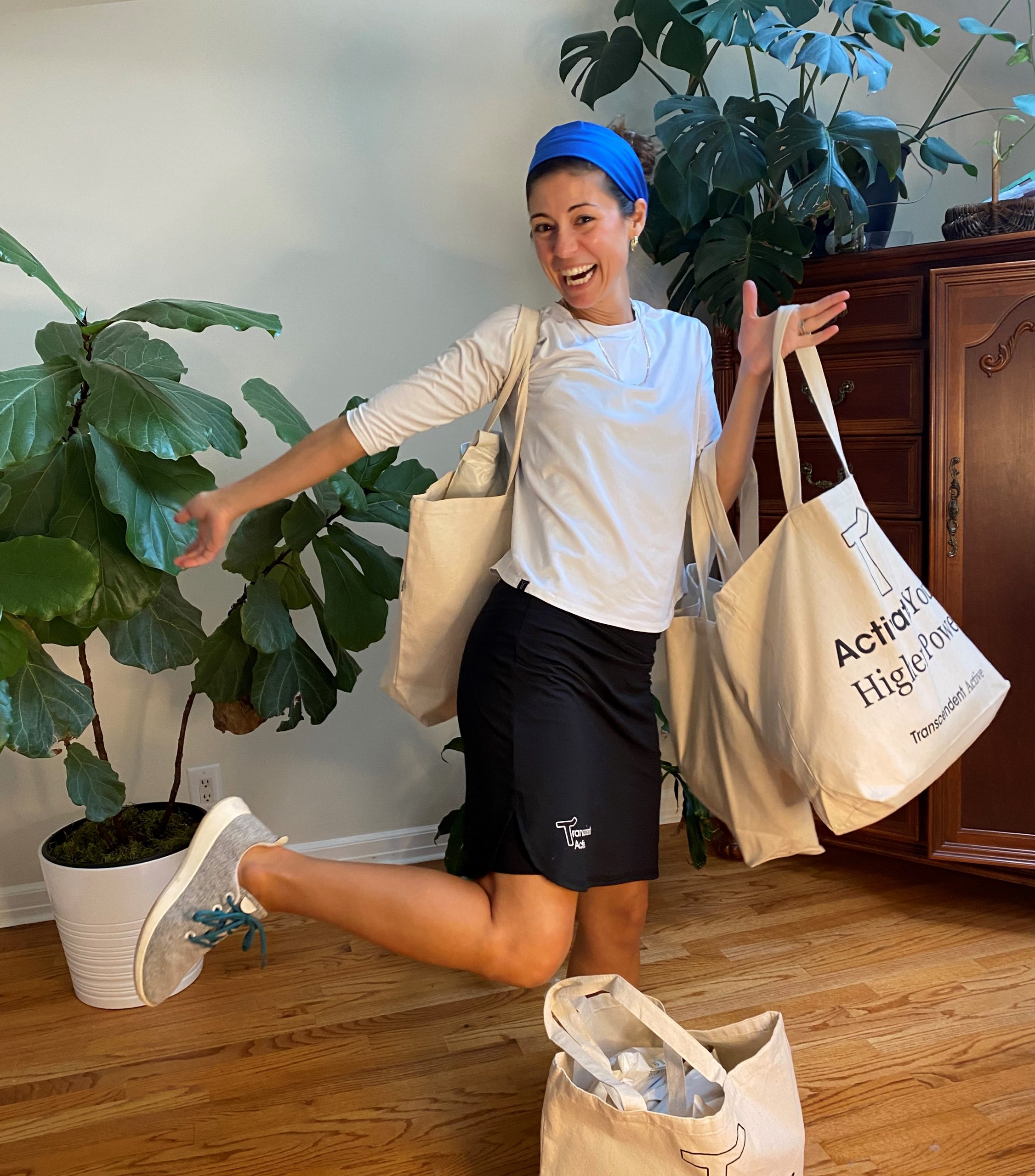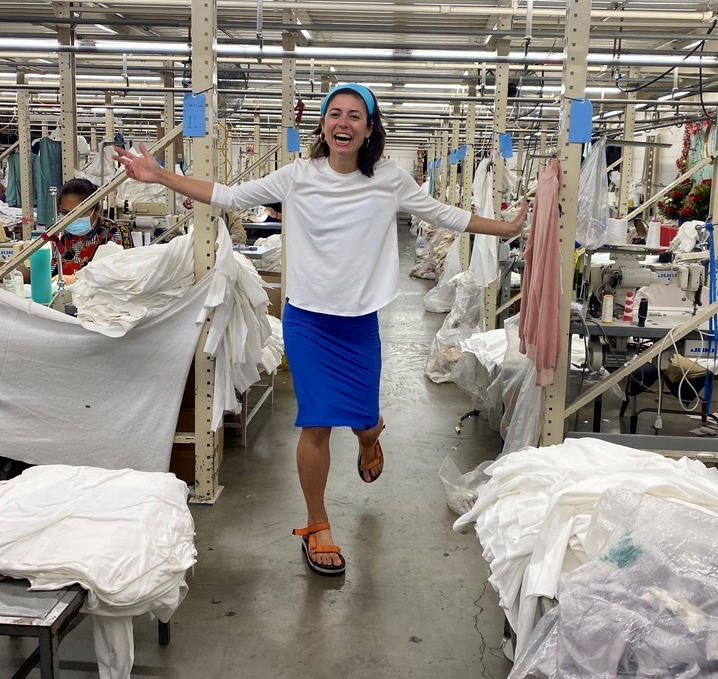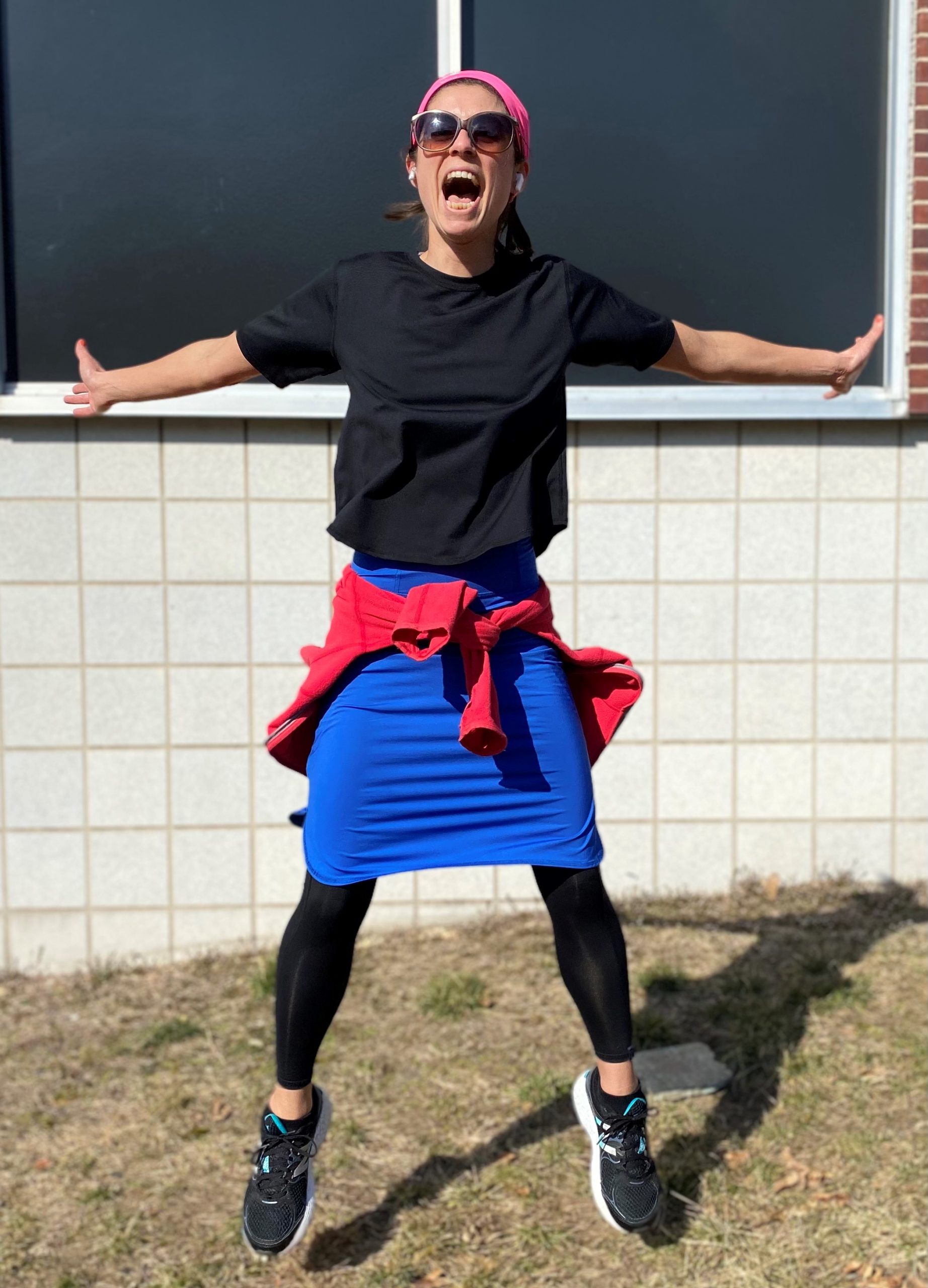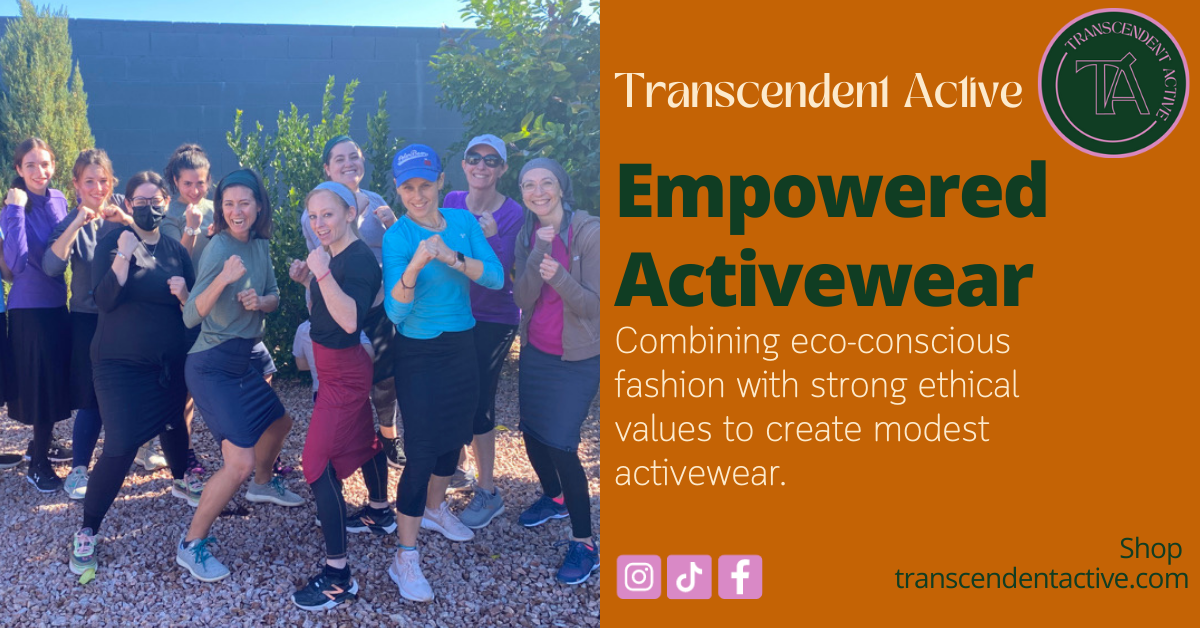A Woman on the Go
An interview with Aja Cohen
By Penina Taylor
When you hear of a fashion designer who has designed for the likes of Aéropostale, Elle Magazine, Converse, Fila, etc., you probably don’t imagine a petite Orthodox Jewish mom from Teaneck, NJ. But that is exactly who Aja (pronounced: Asia) Cohen is – and of course, so, so much more.
Aja was born into a large Italian Catholic family, fondly remembering large family Sunday dinners together each week. So when she became Jewish, the weekly Shabbat meals felt very familiar and comfortable. But even from a young age, Aja was one who marched to the beat of a different drummer. She was an actress in high school, she was the first one in her family to say she was leaving New Jersey, and she was the first that was going to college – she had a lot of big dreams.
And of course, she was the first to think about converting to Judaism.
When Aja was in high school, her family moved from a predominantly Italian Catholic community to one with a sizable Jewish population. For the first time in her life, she was exposed to Jewish people. The Jewish population of her new high school was so large, in fact, that the school gave days off for Rosh Hashana and Yom Kippur. Most of her friends were not Jewish, but this was really the first time she was aware of Judaism.
For college, Aja was accepted to the prestigious Pratt Institute, ranked in the top 10 of US and International art and design colleges. When her father dropped her off at college, he asked her to go to church, hoping that it would give her a moral compass while she navigated the jungles of college life and New York City. So, she went, but even back in high school she was already looking for something new (though not consciously aware of it), so she thought she would try something different, but still ended up back in the Catholic church. She went “religiously” every week for some time, but eventually stopped attending.
One day during her first year at college, her best friend invited her out on a double date. As it turned out, the guy was Israeli. Aja remarks that she knew so little about Israel and Judaism that she asked him if he spoke Yiddish. Hebrew wasn’t even a word in her vocabulary. In the end, they dated for three years and that was her first real introduction to Judaism.
While they were dating, Aja noticed that even though the family wasn’t Orthodox, they attended an Orthodox synagogue. They didn’t fully keep Shabbat, but they had a family dinner every Friday night. It was a confusing experience for Aja as her boyfriend never actually explained why they had to be at his parents’ home at a specific time each Friday night; he didn’t explain any of it to her – but he did make it clear very early on that he couldn’t marry her because she wasn’t Jewish. At 19 years old, marriage wasn’t even on Aja’s radar, so she thought it a rather odd thing to say, but took it in stride. As Aja observed the family’s customs, she started to pick up on the more religious aspects of Judaism, and her curiosity was piqued.
That summer Aja went to the book store and bought a fictional book about a Chassidic family, which gave her a better understanding of Orthodox Judaism and got her even more curious. So, when Rosh Hashana rolled around, she told her boyfriend that she wanted to go to shul with him for the holiday. Of course, the book had not fully prepared her for what she would experience in synagogue – and neither had her boyfriend. Aja’s first shock was that she had to sit upstairs, separate from her boyfriend. And of course, because everything was in Hebrew, she had no clue what was going on. She remarks that it didn’t really bother her because it was clear that she was not the only one there who had no clue. However, when the rabbi gave his sermon, that was in English. She doesn’t remember now what Rabbi Levy spoke about, but it touched her in a really deep place, and it inspired her to dig deeper into what Judaism was really about. Of course, as so often happens in stories like this, as she began to explore Judaism and decided to begin taking on mitzvot, her boyfriend and his family offered resistance.
After they broke up, and she graduated college, Aja took a break to travel to Europe with a group of friends. Her mother encouraged her to visit churches on her trip, as Europe is rich with Church architecture and history and her mom hoped it would inspire her to reconnect with her own religion.
About a year after returning from that summer in Europe, Aja decided to pursue a Conservative conversion. She knew that eventually she wanted to do an Orthodox conversion, but at the time she wasn’t prepared to fully keep Shabbat and some of the other mitzvot, and she didn’t want to lie about where she was at to get the Orthodox conversion. During the Conservative conversion program, Aja realized that most of the other people in her program were dating or married to a Jew and she was the only one who was single, choosing to convert not because of someone else, but because she believed it was the right thing for her. And yet, even though she chose a Conservative conversion because she wasn’t ready for the whole Orthodox package, deep down inside she knew that’s where she belonged.
Shortly after her conversion, one Shabbat at the Conservative synagogue, she was offered an aliyah. She told the rabbi that she wasn’t comfortable with that because girls don’t do that. Before her Conservative conversion she had actually started out learning with Chabad, and she feels like the foundations of her Judaism were actually from what she had learned there – which was Orthodox, not Conservative. So, she felt very comfortable within the Orthodox environment. And in fact, though she had issues with the Conservative movement, she loved the Conservative shul, which is where she met her future husband.
They met on Yom Kippur and they started dating shortly thereafter. He didn’t care that she didn’t have an Orthodox conversion, he considered her Jewish. But as they got more serious and began to think about marriage, she mentioned to him that she had actually always wanted an Orthodox conversion. He was on board with that, but as the process moved along it became clear that he was going to have to become somewhat more observant if she was going to be able to convert Orthodox. In the end they both made the conscious decision together to start keeping Shabbat, among other things.
So how did she end up with her own clothing brand? In middle school, Aja enrolled in a “home ec” class. One of the focuses of the class was sewing. Aja really didn’t want to learn how to sew, but if she was going to have to, it would be on her terms. The assignment was to make a pair of boxer shorts, but she wasn’t going to have any of that. She went out to the fabric store, picked out the funkiest, wild fabric that she could find and instead of boxer shorts, she made this really cute shift dress, and that was it. She was bitten by the fashion bug. She was so inspired that she began making all sorts of clothes during high school. One summer while still in high school, Aja participated in a program at FIT (Fashion Institute of Technology) and the following summer she did a program at the School of Visual Arts, and that was the beginning, which led to her going to Pratt to study fashion design. Her senior thesis was a runway show. During college she interned at Elle Magazine, as well as some well-known designers.
Her first real job out of college was for Aéropostale, a large mall retail store. She worked on the women’s design team, working with “wovens”, designing tops, dresses, and denim.
When asked about her journey from her first job at Aéropostale to owning her own company, Aja explains that in the fashion industry, you have to move around a lot, not only to earn a decent salary, but also in order to advance in your career. So, from Aéropostale, she went to Converse, designing men’s activewear and then she went to Fila, designing a tennis line for them. After Fila, she worked at Champion. During this time she married and began her family. This meant that she had more demands on her time and needed more flexibility, so she went to work for Syrian families who are well-known for their licensed brands in New York. She says it was a good match because she loved what she was doing, but it accommodated her Shabbat-observant mommy lifestyle. But it also required her to wear many hats, gaining experience in
every part of the design and production process – and this helped her to realize that she was totally capable of running her own company.
After Aja had her third baby, while working for a fast fashion brand that was very demanding, her husband Evan decided to take a severance package and leave his job and try to figure out what would be next in his career. As it turns out, the day after Evan left his job, she got notice that she was being let go (something super common in the fashion industry – lines are canceled, money is directed into new projects and jobs just evaporate).
Rather than being upset at losing her job, she saw it as a blessing because it opened up the opportunity for her to reevaluate what she wanted to do going forward. Aja spoke with a career-counselor friend who told her that she needed to do something for her “community”. At that point she wasn’t sure what “community” she meant. On a hiking trip in Acadia national park in Maine, as they were hiking, it dawned on her that she really had two communities – the yoga community (she was a certified yoga instructor) and the religious Jewish community. So she thought, “What if I married the two together and created a line of modest activewear?” She realized that both of those “communities” have challenges that she can fix through fashion design. An acquaintance connected her with someone who would help her refine her mission and what her new company would be all about.
Even though the brand is labeled as activewear, she’s designed the clothing to be more than just workout clothes – they are designed purposely to be able to be worn throughout the day. It’s called an “athleisure” brand – the clothing line comprises all-day active pieces that you can wear from carpool to a meeting to a workout and can also dress them up for going out. She says it’s for the woman on the go, but you don’t have to be a marathon runner to wear the clothes (Beatie Deutsch is one of her brand ambassadors). She explains that the premise of the brand is that it is “movement inspired.”
It’s okay to say, “No, I don’t do that” and in the end, most people will respect that.
– Aja Cohen
Transcendent Active is considered a sustainable company. All of the fabric used either comes from recycled bottles or is “dead stock”. Dead stock is the leftovers from big brands, which often order more fabric than they actually need. This excess fabric would normally go to the landfill, but instead, little companies like Aja’s can buy it and repurpose it so that it doesn’t end up going to waste. The fabric that she buys may be made from recycled plastic, or dead stock, but it’s high-quality fabric that many higher end name brands you would recognize are buying.
Her company is not only sustainable because of the fabric she chooses, but she’s also careful with how much product she creates. Another aspect of sustainability is how the product is packaged, so instead of using a second poly bag in the packaging, she uses tissue paper, and the stickers actually dissolve if you run them under water. She also encourages her customers to reuse the (recycled) mailer bags when they make returns.
Transcendent Active is also working towards size inclusivity – meaning they try to carry clothing in a wider variety of sizes. Because they are still starting out, not everything is available in plus sizes, but their active skirts as well as a few other items do go up to 3x. Her goal is to one day have everything available up to 3x, but for now that’s just not possible.
Aja is living proof that a woman can be successful in the fashion world and still be an observant Jew. She proves that you don’t have to throw the baby out with the bath water, if you are resourceful. Aja explains that when she was working in corporate she definitely had to “have the talk” about winter Fridays, Shabbat and holidays but, she says that when you stand up for yourself and your values, people respect you.
She says it’s possible, even in difficult industries – but you have to know your values, and you have to stand up for yourself. It’s okay to say, “No, I don’t do that” and in the end, she believes, most people will respect that.
When asked for parting words of wisdom, Aja says that often when we are young we think that we need to “have it all figured out” by a certain point in our lives, that we will be married by this age, or have accomplished a certain amount by a certain time. But life takes its course. And just because you haven’t found what you’re looking for, doesn’t mean you won’t, and it doesn’t have to be by a certain age. Maybe you won’t find it by the time you are 25 – Aja was 37, although it could also be in your 60s – but it’s important to remember that it’s never too late. As moms, and women, we do sometimes feel stuck, especially when we are in the middle of raising our families, but not to worry if you haven’t found that ‘aha’ moment, because things can change in an instant.

